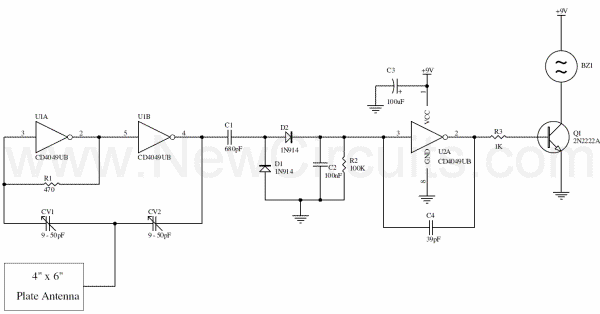Proximity Alarm
Title: Proximity Alarm
electronic circuit
Source: unknown
Published on: 2005-08-27
Reads: 1374
Print version: ![]()
Other electronic circuits and schematics from Security and other sensors and detectors
-
Electronic detector of air flow
-
DayLight Alarm
-
Melody generator for greeting cards
-
Mains Remote-Alert
-
Ultra-simple Voltage Probe
-
Combination Lock
-
Infrared emitter and infrared Reciever
-
Brakelight Flasher
-
Metal Detector
-
Infrared Alarm

